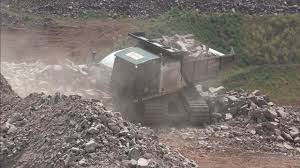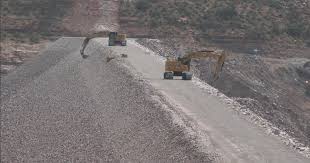
Loveland, CO — After decades of planning and nearly four years of nonstop construction, the 350-foot-tall Chimney Hollow Dam west of Loveland is on the verge of completion. The massive project, the tallest dam built in the United States in the last 20 years, will soon begin the process of filling its long-awaited reservoir — but not before crews tackle an unexpected challenge: elevated uranium levels in the rock used for construction.

The dam stretches more than 1,000 feet across and features a specialized thin asphalt layer designed to prevent seepage through the rocky structure. When complete, it will form Chimney Hollow Reservoir, a critical water storage facility aimed at meeting the demands of Northern Colorado’s rapidly growing population.
"The need for water is great," said Jeff Drager, director of engineering for Northern Water.
Drager, who has been with the project since its earliest studies, said it’s deeply personal to see the vision take shape.
"I was hired 30 years ago for preliminary studies for this project," Drager said. "So, yeah, it has been a long time career building thing for me."
Construction of the dam has been a feat of engineering and logistics. Crews worked around the clock, pulling rock from an on-site quarry and hauling it continuously to the dam site.
"They (told me they) would dump one of those trucks every two-to-three minutes, 24 hours a day, for two and a half years to get the project completed. Which at the time I thought was crazy, but they have done that," Drager recalled.
Now that the dam is structurally complete, workers are dismantling temporary ramps, clearing equipment, and preparing to pave a maintenance roadway across the top — one that will not be open to the public.
Recently, testing revealed higher-than-expected levels of uranium in the rock used to build the dam. While naturally occurring uranium is not uncommon in Colorado geology, the elevated concentration requires careful management to ensure the water meets federal safety standards.

Northern Water is weighing multiple strategies. One possibility is diluting the water by blending it 20-to-1 with supplies from other lakes and rivers. Another involves building an on-site treatment plant or sending the water to partner utilities for treatment.
"We haven’t determined what course of action we will end up taking yet," Drager said.
The Environmental Protection Agency allows trace uranium in drinking water, but strict limits apply. Drager said without treatment, levels could exceed safe thresholds for five to ten years.
If all goes as planned, initial reservoir filling could begin within the next two months, but delivering water to customers may be delayed six months to several years while treatment solutions are implemented.
Despite the added complexity, the project remains on track to provide a reliable water source for about 800,000 people along Colorado’s Front Range — from Broomfield to Loveland and Greeley.
"This project is a long-term reliable source of water for about 800,000 people on the Front Range. From Broomfield out to Loveland and Greeley, and all the towns between them. All of them will rely on this for a reliable source of water going into the future," Drager said.
Northern Water officials stress that the uranium issue, while significant, will not derail the project’s completion or long-term benefits.
Originally reported by Dillon Thomas in CBS News.